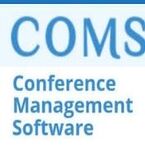Renowned Speakers

Kathryn Allen
Executive Director, Science and Public Affairs Speakers World Cancer Research Fund International UK

Kwok-nam Leung
wok-nam Leung The Chinese University of Hong Kong (CUHK), Hong Kong

Dr. Vanessa Naguleswaran
Pediatric Registrar,Basildon Hospital, UK

Shannon Miller
Empowerment Coach. and Cancer Survivor and Cancer Research Speaker, USA

Magnus S Magnusson
Director University of Iceland, Iceland

Qian Tao
Professor,Department of Clinical Oncology, Hong Kong

Benjamin Deneen
Ph.D. and Professor at UCLA, USA

Zhi Ping Xu
University of Queensland, Australia
Recommended Global Pediatrics Webinars & Conferences
Asia Pacific & Middle East
Pediatric Cancer Congress 2026
- Introduction:
- Sessions and Tracks
- Important Guidelines
- Market Analysis Report
- Past Conference Report
Introduction:
We are honored to extend a warm invitation to all healthcare professionals, researchers, scientists, academicians, policymakers, patient advocates, and industry representatives to participate in the 27th World Congress on Pediatric Oncology and Cancer Care, scheduled to take place on January 26–27, 2026, in Edinburgh, Scotland.
This landmark congress serves as a global platform dedicated to advancing knowledge, fostering innovation, and strengthening collaborative efforts in the battle against childhood cancers. With the increasing complexity and incidence of pediatric malignancies, this event brings together the brightest minds and most compassionate hearts in pediatric oncology to explore the most recent breakthroughs, clinical strategies, and research advancements that are shaping the future of cancer care for children and adolescents.
The congress will feature an exceptional scientific program comprising plenary sessions, keynote addresses, oral and poster presentations, panel discussions, and interactive workshops. Topics will span a wide range, including but not limited to precision medicine, immunotherapy, targeted therapies, early detection methods, supportive care, psychosocial interventions, survivorship, palliative care, and global access to treatment. Emphasis will also be placed on emerging technologies such as genomics, artificial intelligence, and digital health solutions, which are revolutionizing the way we diagnose and treat childhood cancers.
Set in the beautiful and historic city of Edinburgh, renowned for its rich cultural heritage and academic excellence, the congress offers not only a world-class scientific experience but also an unforgettable cultural and networking opportunity. Participants will have the chance to exchange ideas, forge meaningful collaborations, and contribute to global efforts aimed at improving the lives of children with cancer.
As we gather in 2026, this congress aspires to serve as a beacon of knowledge, compassion, and hope. Together, we aim to accelerate progress in pediatric oncology, reduce disparities in care, and move closer to a world where no child dies from cancer.
We look forward to your valuable participation in this impactful event.
Sessions and Tracks
Track 01: Pediatric Leukemia
Pediatric leukemia is the most common form of childhood cancer, accounting for nearly one-third of all pediatric cancer diagnoses. It originates in the bone marrow, where blood cells are produced, and results in the rapid overproduction of abnormal white blood cells. These immature cells interfere with the production of healthy blood cells, leading to anemia, increased susceptibility to infections, and impaired clotting. The two primary types of leukemia in children are acute lymphoblastic leukemia and acute myeloid leukemia. Acute lymphoblastic leukemia is more prevalent and generally has a favorable prognosis with proper treatment, whereas acute myeloid leukemia is less common but requires more intensive therapy. The symptoms of pediatric leukemia often include fatigue, frequent infections, unexplained bruising or bleeding, bone or joint pain, swollen lymph nodes, and fever. Early diagnosis is critical, and it usually involves a combination of physical examination, blood tests, bone marrow aspiration, and imaging studies. Treatment for pediatric leukemia typically includes chemotherapy as the mainstay, often delivered in multiple phases such as induction, consolidation, and maintenance. Some patients may also require radiation therapy or stem cell transplantation, especially in cases of relapse or high-risk disease. Advancements in pediatric leukemia treatment over the past few decades have significantly improved survival rates. The introduction of targeted therapies and immunotherapies, such as chimeric antigen receptor T-cell therapy, has shown promising results in refractory cases. Supportive care, including antibiotics, blood transfusions, and nutritional support, plays a vital role in managing treatment-related complications. Psychological and emotional support for the child and family is equally important to cope with the long treatment duration and side effects.
Research in pediatric leukemia continues to focus on identifying genetic and molecular factors that influence disease progression and response to treatment. These insights are critical in developing personalized therapies that minimize toxicity and enhance outcomes. Survivorship programs are increasingly integrated into pediatric oncology care to monitor and manage the long-term effects of treatment, which can include growth disturbances, cognitive impairment, fertility issues, and secondary cancers. Collaboration among pediatric oncologists, hematologists, researchers, and families has been instrumental in driving progress and fostering hope for children affected by leukemia. Education, awareness, and equitable access to treatment across different regions remain key components in reducing the global burden of pediatric leukemia and improving the quality of life for young patients worldwide.
Track 02: Pediatric Brain Tumors
Pediatric brain tumors represent the second most common type of childhood cancer after leukemia and are the leading cause of cancer-related death in children. These tumors can arise in various regions of the brain and central nervous system, each presenting distinct clinical challenges based on their location, histological characteristics, and growth patterns. Common types include medulloblastoma, ependymoma, astrocytoma, and brainstem gliomas, among others. Symptoms may vary widely but typically include persistent headaches, nausea, vomiting, balance issues, visual disturbances, and changes in behavior or school performance. The diagnosis involves detailed neurological examination, imaging studies such as magnetic resonance imaging or computed tomography scans, and often surgical biopsy to determine the tumor type. Treatment strategies are multifaceted and depend on tumor type, size, grade, and location. They may involve surgical resection, chemotherapy, and radiation therapy, with the goal of maximal tumor removal while preserving neurological function. While surgical advances have improved the safety and precision of tumor resection, certain brain regions remain inoperable due to their critical functions. Radiation therapy must be carefully managed in younger children due to the risk of long-term developmental and cognitive effects. Recent progress in molecular genetics and tumor profiling has paved the way for more targeted treatments, reducing the reliance on traditional cytotoxic therapies. Techniques such as proton beam therapy, which minimizes damage to surrounding healthy tissue, are increasingly being used in specialized centers. Despite therapeutic advancements, many survivors of pediatric brain tumors face long-term health challenges, including neurocognitive deficits, endocrine disorders, hearing loss, and psychological issues. Comprehensive rehabilitation and survivorship care are essential components of post-treatment planning, focusing on academic reintegration, social development, and quality of life. Ongoing clinical trials are exploring immunotherapy, gene therapy, and novel drug delivery methods to improve outcomes while reducing toxicity. Global disparities in access to diagnostic and treatment resources remain a significant concern, particularly in low- and middle-income countries. Collaborative efforts involving clinicians, researchers, policymakers, and patient advocacy groups are vital to advancing treatment standards, increasing early detection, and supporting the holistic needs of children and families navigating the journey of pediatric brain tumors.
Track 03: Neuroblastoma Cancer
Neuroblastoma cancer is a malignant tumor that develops from immature nerve cells and primarily affects infants and young children, often under the age of five. It originates in the sympathetic nervous system, commonly in the adrenal glands located above the kidneys, but can also arise in nerve tissues along the spine, chest, abdomen, or pelvis. This form of cancer is unique among pediatric malignancies due to its varied clinical behavior, which can range from spontaneous regression to aggressive metastatic disease. The signs and symptoms of neuroblastoma cancer depend on the tumor’s location and extent and may include a palpable abdominal mass, pain, bone tenderness, fatigue, weight loss, fever, or even opsoclonus-myoclonus syndrome, a rare neurological disorder. Diagnosis involves a combination of imaging studies such as magnetic resonance imaging or computed tomography, urine tests for catecholamine metabolites like homovanillic acid and vanillylmandelic acid, and tissue biopsy for histopathological examination. Staging is critical and considers factors such as the age of the child, the tumor’s spread, and specific genetic features like MYCN amplification, which is associated with poor prognosis. Treatment options vary significantly based on risk stratification and may include surgery, chemotherapy, radiation therapy, immunotherapy, and autologous stem cell transplantation. Low-risk neuroblastoma cancer may only require surgical removal, while high-risk cases necessitate multimodal treatment approaches over extended periods. Immunotherapy, particularly with monoclonal antibodies targeting disialoganglioside GD2, has shown promise in improving survival rates in high-risk patients. Despite therapeutic advances, neuroblastoma cancer remains one of the most challenging pediatric cancers due to its heterogeneity and tendency to relapse. Survivors often face long-term health concerns such as hearing loss, growth impairment, fertility issues, and secondary malignancies, necessitating lifelong follow-up and multidisciplinary care. Research continues to focus on uncovering the molecular and genetic mechanisms driving neuroblastoma progression and resistance, with the aim of identifying new therapeutic targets. International collaborations, including the Children’s Oncology Group and the International Society of Pediatric Oncology, are vital in conducting large-scale clinical trials and establishing global treatment guidelines. Access to advanced diagnostics and therapies remains unequal across regions, underscoring the need for equitable pediatric cancer care infrastructure. Comprehensive family support services, including psychological counseling and social integration programs, are essential to help families cope with the emotional and financial strain of neuroblastoma cancer. As understanding deepens, the goal remains to improve survival outcomes while reducing treatment-related toxicity and ensuring a better quality of life for affected children worldwide.
Track 04: Wilms Tumor
Wilms tumor is a rare kidney cancer that primarily affects children, usually under the age of five, and is also known as nephroblastoma. It arises from immature kidney cells and is the most common type of pediatric renal cancer. The tumor often presents as a painless abdominal mass discovered by a caregiver or during a routine examination. Other symptoms may include abdominal pain, blood in the urine, fever, hypertension, or constipation. Wilms tumor is typically unilateral but may occur bilaterally in some cases, especially in children with genetic syndromes such as WAGR syndrome, Denys-Drash syndrome, or Beckwith-Wiedemann syndrome. Diagnosis is confirmed through imaging techniques like ultrasound, computed tomography, or magnetic resonance imaging, followed by surgical exploration and histological confirmation. The tumor is staged based on its spread, and this staging guides treatment planning. Most cases are treated with a combination of surgery, chemotherapy, and, in some instances, radiation therapy. The standard approach involves nephrectomy to remove the affected kidney, followed by chemotherapy to target residual cancer cells. For bilateral tumors or tumors associated with genetic conditions, kidney-sparing surgeries may be considered. Prognosis is generally favorable, with survival rates exceeding 90 percent in localized disease, due to well-established treatment protocols developed through international cooperative studies. However, treatment side effects, including potential damage to remaining kidney tissue, infertility, and cardiac toxicity from certain chemotherapy drugs, must be carefully managed. Long-term monitoring is essential to detect any recurrence and to address late effects of therapy. Advances in genetic research have identified molecular alterations such as WT1 and WT2 gene mutations, which have improved understanding of tumor development and risk stratification. Efforts are ongoing to personalize therapy further by reducing treatment intensity in low-risk patients while intensifying it for those with high-risk features. Wilms tumor remains a success story in pediatric oncology due to the high cure rates achieved through global collaboration, but challenges persist in ensuring timely diagnosis, access to care, and supportive services, especially in low-resource settings. Multidisciplinary care involving pediatric oncologists, nephrologists, surgeons, radiologists, and psychologists is crucial to support the medical and emotional well-being of both patients and their families throughout treatment and survivorship.
Track 05: Lymphomas Children
Lymphomas children cases represent a significant portion of pediatric cancers and are divided mainly into two broad categories: Hodgkin lymphoma and non-Hodgkin lymphoma. Hodgkin lymphoma is characterized by the presence of Reed-Sternberg cells and commonly affects adolescents and young adults, while non-Hodgkin lymphoma encompasses a diverse group of lymphoid malignancies that often present more aggressively but are highly responsive to therapy. In children, lymphomas may develop in lymph nodes or extranodal sites such as the chest, abdomen, or central nervous system, and symptoms may include swollen lymph nodes, fever, weight loss, night sweats, persistent cough, abdominal pain, or fatigue. Diagnostic workup includes a thorough physical examination, blood tests, imaging studies, and lymph node biopsy to determine the specific type and stage. Treatment varies based on the subtype and stage but generally includes multi-agent chemotherapy, and in some cases, radiation therapy or immunotherapy. Pediatric lymphomas have seen remarkable improvements in prognosis, with cure rates approaching or exceeding 90 percent for many forms, particularly when diagnosed early and treated at specialized centers. The goal of treatment is not only to cure the disease but also to minimize long-term toxicity, which may include fertility issues, cardiopulmonary complications, and increased risk of secondary cancers. Advances in biological understanding have led to the use of targeted agents and immunotherapies, such as rituximab in B-cell non-Hodgkin lymphoma, which have enhanced treatment efficacy while reducing side effects. Research is ongoing to further characterize the genetic and molecular pathways involved in pediatric lymphomas, which may lead to even more precise therapies. Psychosocial support, school reintegration programs, and long-term follow-up care are essential components of comprehensive management to address the needs of survivors. Disparities in diagnosis and treatment outcomes still exist globally, particularly in regions with limited oncology resources, highlighting the importance of international partnerships, awareness campaigns, and public health initiatives. Overall, lymphomas in children are among the most treatable pediatric cancers, and continued research, education, and equitable access to care are essential for sustaining and improving these outcomes.
Track 06: Retinoblastoma Eye Cancer Disease
Retinoblastoma eye cancer disease is a rare but aggressive malignant tumor of the retina that primarily affects young children, usually under the age of five. It arises from the retinal cells responsible for detecting light and is often caused by mutations in the RB1 gene, a tumor suppressor gene that, when defective, leads to uncontrolled cellular proliferation. Retinoblastoma can occur in one eye or both eyes and may be inherited in a familial form or arise spontaneously. The most common presenting sign is leukocoria, or a white reflex in the pupil, often noticed by parents in photographs, followed by symptoms such as strabismus, poor vision, redness, or swelling of the eye. Early detection is vital, as untreated tumors can invade surrounding tissues, including the optic nerve and brain, and may metastasize to distant organs. Diagnosis is typically made through clinical examination by an ophthalmologist, supported by imaging studies like ultrasound, magnetic resonance imaging, and sometimes computed tomography to assess the extent of the tumor. Genetic testing is also essential for determining hereditary risk and guiding family screening. Treatment strategies depend on the size, location, and extent of the tumor and include focal therapies such as laser photocoagulation, cryotherapy, and thermotherapy for small tumors, while more advanced cases may require systemic chemotherapy, intra-arterial chemotherapy, or enucleation—the surgical removal of the eye—to prevent life-threatening spread. Preservation of vision and life are the two primary goals in management. Advances in intra-arterial and intravitreal chemotherapy have significantly improved outcomes by delivering targeted drugs directly to the tumor site, reducing systemic toxicity and preserving the eye in many cases. The survival rate for retinoblastoma is over 90 percent in high-income countries due to early diagnosis and multidisciplinary treatment; however, in many low-resource settings, delayed presentation and limited access to care result in poor outcomes and increased mortality. Long-term follow-up is necessary to monitor for tumor recurrence, secondary malignancies, especially in hereditary cases, and psychosocial impacts on the child and family. Retinoblastoma serves as a model for the importance of integrating genetics into cancer care, and ongoing research aims to identify novel molecular targets and develop less invasive treatments. Awareness campaigns, newborn screening, and improved access to ophthalmic and oncologic services are essential to improve early diagnosis and survival rates worldwide. Collaborative efforts between pediatric oncologists, ophthalmologists, genetic counselors, nurses, and psychosocial teams are crucial in delivering holistic care to children with retinoblastoma eye cancer disease and ensuring a future with optimal health, vision, and quality of life.
Track 07: Rhabdomyosarcoma Soft Tissue Tumor
Rhabdomyosarcoma soft tissue tumor is a highly malignant cancer that originates in the skeletal muscle tissue and is the most common soft tissue sarcoma in children and adolescents. It can occur in various parts of the body, including the head and neck region, genitourinary tract, and extremities, often presenting as a rapidly enlarging, painless mass. The tumor arises from primitive mesenchymal cells that are meant to develop into striated muscle, and while its exact cause is unknown, certain genetic syndromes such as Li-Fraumeni syndrome, neurofibromatosis type 1, and Beckwith-Wiedemann syndrome are associated with increased risk. Rhabdomyosarcoma is classified histologically into two major subtypes embryonal and alveolar with the alveolar subtype generally associated with a more aggressive course and poorer prognosis due to specific chromosomal translocations like PAX3-FOXO1. Symptoms depend on the tumor's location, and may include obstruction, bleeding, or functional impairment of nearby organs. Diagnosis is confirmed through imaging techniques such as magnetic resonance imaging or computed tomography scans, followed by biopsy and immunohistochemical analysis to determine the tumor type and genetic characteristics. Staging is essential for treatment planning and typically includes bone marrow biopsy and positron emission tomography scans to assess metastasis. The standard treatment approach involves a multimodal regimen combining surgery, chemotherapy, and radiation therapy. Chemotherapy agents such as vincristine, actinomycin-D, and cyclophosphamide have been used effectively, and surgical resection is pursued when feasible without significant functional loss. Radiation therapy is critical in cases where complete resection is not possible or where microscopic residual disease remains. Despite therapeutic advances, long-term survival for high-risk and metastatic rhabdomyosarcoma remains limited, prompting ongoing clinical trials and research into targeted therapies and immunotherapeutic strategies. The management of rhabdomyosarcoma is complex and requires a multidisciplinary team including pediatric oncologists, surgeons, radiologists, pathologists, physical therapists, and psychosocial experts to optimize outcomes. Survivors often face long-term complications such as musculoskeletal deformities, organ dysfunction, infertility, and secondary malignancies due to aggressive treatment protocols. Raising awareness, strengthening pediatric oncology infrastructure, and expanding access to clinical research are essential steps toward improving outcomes for all children diagnosed with rhabdomyosarcoma soft tissue tumor and enabling them to lead healthy, productive lives.
Track 08: Osteosarcoma Childhood Bone Cancer
Osteosarcoma childhood bone cancer is the most common primary malignant bone tumor in children and adolescents, typically arising during periods of rapid bone growth in the teenage years. This tumor originates from primitive bone-forming mesenchymal cells and usually develops in the metaphyseal region of long bones, most commonly affecting the distal femur, proximal tibia, and proximal humerus. The cause of osteosarcoma is not entirely understood, but genetic conditions such as Li-Fraumeni syndrome, hereditary retinoblastoma, and Rothmund-Thomson syndrome are associated with an increased risk. The classic presentation includes localized bone pain that may worsen at night or with activity, swelling, and sometimes a noticeable mass near a joint. Fractures can also occur at the tumor site due to weakening of the bone. Diagnostic evaluation involves radiographic imaging, magnetic resonance imaging to determine the local extent of the tumor, and a biopsy to confirm diagnosis and histological subtype. Additional tests such as chest computed tomography and bone scans or positron emission tomography scans are conducted to assess for metastatic disease, which most often spreads to the lungs. Treatment of osteosarcoma is based on a combination of neoadjuvant chemotherapy, surgical resection, and adjuvant chemotherapy. Chemotherapy typically includes agents like methotrexate, doxorubicin, and cisplatin, which are effective in shrinking the tumor and eliminating micrometastases. Surgical options include limb-sparing surgery or amputation, depending on the tumor size, location, and response to chemotherapy. Advances in surgical techniques and prosthetic development have made limb preservation possible for the majority of patients. However, in some cases where the tumor encases vital structures, amputation remains necessary. Radiation therapy is generally not effective for osteosarcoma due to its resistance to radiation. Prognosis depends on several factors, including tumor size, response to chemotherapy, and presence or absence of metastasis at diagnosis. While the overall survival rate for localized osteosarcoma approaches 70 to 75 percent, outcomes are significantly poorer for patients with metastatic disease. Long-term survivors may experience chronic health issues such as cardiotoxicity, nephrotoxicity, hearing loss, and functional impairments, underscoring the importance of lifelong follow-up and multidisciplinary survivorship care. Research continues to investigate targeted molecular therapies, immunotherapies, and biomarkers that may allow for more individualized and less toxic treatment regimens. Osteosarcoma childhood bone cancer remains a significant focus in pediatric oncology, with ongoing efforts to improve cure rates while minimizing long-term harm.
Track 09: Germ Cell Tumor Disease
Germ cell tumor disease in children represents a rare but diverse group of cancers arising from primordial germ cells, which are the precursors of sperm and egg cells. These tumors can occur in both gonadal sites, such as the ovaries and testes, and extragonadal sites including the sacrococcygeal region, mediastinum, retroperitoneum, and brain. Germ cell tumors are classified into benign and malignant types, with malignant forms including yolk sac tumors, embryonal carcinomas, choriocarcinomas, and mixed germ cell tumors. In pediatric patients, yolk sac tumors are the most common malignant subtype and often present with nonspecific symptoms depending on the tumor location, such as an abdominal or pelvic mass, pain, constipation, or urinary difficulties. Testicular tumors may present as painless swelling or firmness in the scrotum, while intracranial germ cell tumors may cause headaches, visual disturbances, or hormonal imbalances. Diagnostic evaluation includes physical examination, imaging studies such as ultrasound, magnetic resonance imaging, or computed tomography, and measurement of tumor markers in the blood, including alpha-fetoprotein and beta-human chorionic gonadotropin, which help in diagnosis, monitoring treatment response, and detecting relapse. Biopsy or surgical resection provides definitive histological confirmation. The mainstay of treatment involves surgical excision of the tumor followed by chemotherapy, especially for malignant and metastatic forms. The chemotherapeutic agents most commonly used are bleomycin, etoposide, and cisplatin, which have proven highly effective in curing many cases. Radiation therapy is rarely used in pediatric germ cell tumors due to their general chemosensitivity. Prognosis is generally favorable, especially in localized disease, with survival rates exceeding 90 percent in many cases, although outcomes vary based on tumor type, location, stage, and patient age. Long-term follow-up is essential for early detection of relapse and monitoring for late effects such as hearing loss, infertility, renal impairment, and psychosocial challenges. Advances in molecular biology are providing new insights into tumor pathogenesis and potential targets for therapy. Challenges remain in the diagnosis and management of germ cell tumors in resource-limited settings due to lack of awareness, delayed presentation, and limited access to diagnostic and treatment services. A multidisciplinary approach involving pediatric oncologists, surgeons, radiologists, endocrinologists, and psychologists is critical to ensure comprehensive care. Family education, emotional support, and transition programs for adolescents moving to adult care are important aspects of survivorship. Germ cell tumor disease in children, while rare, exemplifies the progress possible in pediatric oncology through early diagnosis, effective treatment, and collaborative care.
Track 10: Pediatric Oncology Nursing Care
Pediatric oncology nursing care is an essential and deeply specialized area of pediatric healthcare that focuses on providing comprehensive support to children diagnosed with cancer and their families throughout the continuum of diagnosis, treatment, recovery, and survivorship. Nurses in this field are highly trained professionals who manage complex treatment regimens, monitor patient responses, administer chemotherapy, manage side effects, prevent infections, and provide constant emotional and psychological reassurance to young patients facing life-threatening illnesses. The role of pediatric oncology nurses extends far beyond clinical procedures—they are advocates, educators, and a consistent presence for children and their families during one of the most vulnerable periods of their lives. These nurses often work in hospital oncology units, outpatient infusion centers, bone marrow transplant units, and palliative care services. Their responsibilities also include the careful monitoring of vital signs, administering pain management, coordinating multidisciplinary care plans, and recognizing early signs of complications such as neutropenic fever, tumor lysis syndrome, or drug toxicity. Communication plays a vital role in pediatric oncology nursing care, as nurses must effectively engage with children of different developmental stages, explain procedures in child-friendly language, and support parents who are often overwhelmed by fear and uncertainty. They also participate in treatment education, helping families understand medication regimens, nutrition, infection prevention, and home care responsibilities. Pediatric oncology nurses form the bridge between the child, the medical team, and the family, ensuring continuity of care and emotional stability in high-stress environments. Specialized training and certifications such as pediatric hematology-oncology nursing credentials are often required to ensure clinical excellence and safety. As cancer therapies evolve, so too must nursing practices, including the integration of newer treatments like immunotherapy and personalized medicine protocols. Nurses must stay current with evidence-based practices and participate in continuing education. Burnout and compassion fatigue are real concerns in this emotionally intense field, making institutional support, peer networks, and mental health resources vital for sustaining the workforce. Global disparities in pediatric oncology nursing are significant, with many low-resource settings lacking the trained personnel to deliver safe and effective care. International collaborations, online training programs, and capacity-building efforts are essential to strengthen pediatric oncology nursing worldwide. Recognizing the indispensable role nurses play in pediatric cancer care is crucial not only for improving clinical outcomes but also for preserving the dignity, comfort, and emotional resilience of every child battling cancer. Pediatric oncology nursing care is not only a science but also an art that combines empathy, clinical skill, and unwavering dedication to transforming the cancer journey into one of compassion, hope, and healing.
Track 11: Cancer Genetics Childhood Research
Cancer genetics childhood research is a rapidly evolving field that investigates the hereditary and molecular factors contributing to the development, progression, and treatment response of pediatric cancers. Unlike adult cancers, which are often linked to environmental exposures over time, many childhood cancers are believed to arise from genetic mutations and developmental disruptions occurring early in life. Germline mutations in specific genes, such as RB1 in retinoblastoma, TP53 in Li-Fraumeni syndrome, and WT1 in Wilms tumor, are well-established contributors to pediatric cancer susceptibility. Additionally, syndromes such as Beckwith-Wiedemann, neurofibromatosis type 1, and familial adenomatous polyposis further illustrate the role of inherited genetic predisposition in pediatric malignancies. Cancer genetics research involves the use of advanced genomic technologies such as whole genome sequencing, transcriptomics, and epigenetic profiling to identify both inherited mutations and somatic changes that drive tumor formation. These insights have led to the discovery of molecular subtypes within specific cancer types, such as the classification of medulloblastoma into distinct biological groups with different prognoses and treatment responses. Understanding these genetic differences enables the development of targeted therapies and helps avoid overtreatment in low-risk patients while intensifying therapy in those with high-risk genetic profiles. Moreover, identifying germline mutations has important implications for family counseling, early screening of siblings, and reproductive decision-making. Ethical considerations are also an essential component of cancer genetics childhood research, particularly regarding consent, data sharing, and the psychological impact of genetic findings. Researchers must navigate complex issues related to privacy and long-term data storage, especially when involving children whose genetic information could influence their future health, insurance, and social decisions. Genetic research is also helping unravel mechanisms of drug resistance, relapse, and late effects, guiding the design of next-generation therapeutics that are both effective and less toxic. Despite advances, disparities in access to genetic testing and counseling remain, particularly in under-resourced regions, underscoring the need for global collaboration, funding, and education. Research institutions and pediatric oncology centers are increasingly integrating genetics into routine clinical practice, forming multidisciplinary teams that include genetic counselors, oncologists, and researchers. The integration of cancer genetics into childhood oncology is transforming care from a one-size-fits-all approach to a personalized, precision-based model. With continued advancements in technology and bioinformatics, cancer genetics childhood research holds the promise of uncovering the roots of pediatric cancer and opening new pathways to early detection, targeted treatment, and lifelong health surveillance.
Track 12: Pediatric Cancer Epidemiology Statistics
Pediatric cancer epidemiology statistics provide critical insights into the incidence, distribution, risk factors, and survival patterns of cancers affecting children and adolescents worldwide. While cancer in children is relatively rare compared to adults, it remains one of the leading causes of disease-related death in individuals under the age of fifteen. Globally, it is estimated that over four hundred thousand new cases of childhood cancer occur each year, with the majority being diagnosed in low- and middle-income countries where access to care is limited and outcomes are significantly poorer. The most common types of childhood cancers include leukemia, brain tumors, lymphomas, neuroblastoma, Wilms tumor, and bone sarcomas, each exhibiting different age-specific patterns and geographical variations. For example, leukemia represents about thirty percent of all pediatric cancers and is more prevalent in developed countries, whereas Burkitt lymphoma has higher incidence in parts of sub-Saharan Africa due to its association with Epstein-Barr virus and malaria. Epidemiological studies are essential for identifying genetic, environmental, and infectious contributors to cancer risk, although the causes of most childhood cancers remain largely unknown. Data collection is achieved through cancer registries, hospital databases, and population-based studies, which help governments and healthcare systems allocate resources, design screening programs, and evaluate treatment outcomes. Survival statistics have improved significantly over the past few decades in high-income countries, with cure rates for certain cancers like acute lymphoblastic leukemia exceeding ninety percent. However, these statistics mask wide disparities in outcomes across regions and socioeconomic groups. In many parts of the world, delayed diagnosis, lack of specialized treatment, abandonment of care, and financial barriers continue to result in unacceptably low survival rates. Epidemiology also plays a key role in understanding long-term health outcomes in survivors, including the prevalence of secondary cancers, chronic illnesses, and psychological effects. The integration of molecular epidemiology is enhancing traditional research methods by correlating genetic markers with population data to better understand cancer patterns and guide personalized treatments. Efforts such as the World Health Organization’s Global Initiative for Childhood Cancer aim to reduce disparities by supporting countries in developing robust cancer registries, improving diagnostic capabilities, and increasing access to essential medicines. Accurate and timely data from pediatric cancer epidemiology statistics is indispensable for shaping policies, conducting impactful research, and ensuring every child regardless of where they are born has a fighting chance against cancer.
Track 13: Childhood Cancer Survivorship Care
Childhood cancer survivorship care is a growing and vital area of pediatric oncology that addresses the long-term health, psychological, and social needs of individuals who have completed cancer treatment during childhood. As survival rates continue to improve, with nearly eighty percent of children in high-income countries living five years or more after diagnosis, attention has increasingly shifted toward understanding and managing the complex, lifelong consequences of cancer and its treatment. Survivors of childhood cancer are at elevated risk for a wide range of late effects, which can manifest months or years after therapy ends and affect virtually every organ system. These may include growth and developmental delays, cognitive impairment, fertility issues, secondary malignancies, endocrine disorders, cardiac and pulmonary dysfunction, and psychosocial challenges such as anxiety, depression, or social isolation. The nature and severity of these effects depend on factors such as the type of cancer, treatment regimen, age at diagnosis, and individual genetic susceptibility. Survivorship care involves regular follow-up visits, comprehensive health screenings, and coordination between pediatric and adult healthcare providers to ensure smooth transitions into long-term monitoring and adult care. The use of individualized survivorship care plans helps map out health risks and recommended screenings tailored to each survivor’s medical history. Education, career planning, lifestyle counseling, and mental health support are integral parts of survivorship programs, helping former patients reintegrate into society and lead fulfilling lives. Pediatric oncology teams often collaborate with endocrinologists, cardiologists, neurologists, psychologists, and rehabilitation specialists to manage late effects holistically. However, access to survivorship care remains inconsistent, especially in low- and middle-income countries where post-treatment follow-up infrastructure is limited or nonexistent. As the global population of childhood cancer survivors grows, research into late effects and survivorship quality is becoming increasingly important, with new models focusing on telemedicine, digital health tools, and community-based care. Advocacy for lifelong insurance coverage, employment rights, and educational accommodations is also crucial in empowering survivors. Childhood cancer survivorship care is about more than just monitoring disease recurrence it is about supporting a lifetime of health, potential, and purpose for those who have already overcome one of the greatest battles of their lives.
Track 14: Innovative Pediatric Cancer Therapy
Innovative pediatric cancer therapy represents the forefront of efforts to improve treatment effectiveness while minimizing harmful side effects in children diagnosed with various forms of cancer. Traditional cancer therapies, including chemotherapy, radiation, and surgery, though often curative, can cause significant long-term damage to growing bodies and developing organs. In response, researchers and clinicians are advancing a new era of precision medicine, where therapies are tailored to the genetic and molecular characteristics of individual tumors. One of the most promising areas is immunotherapy, which harnesses the body’s own immune system to target cancer cells. Chimeric antigen receptor T-cell therapy, for example, has shown remarkable success in treating relapsed acute lymphoblastic leukemia and is now being explored for other childhood cancers. Targeted therapies that inhibit specific cancer-driving mutations, such as tyrosine kinase inhibitors and monoclonal antibodies, offer more precise and often less toxic alternatives to traditional chemotherapy. Proton beam radiation therapy is another innovation that allows for more focused delivery of radiation, reducing damage to surrounding healthy tissues and lowering the risk of long-term effects. Advances in nanomedicine are being explored to deliver chemotherapy directly to tumor sites, improving efficacy and reducing systemic toxicity. Personalized treatment planning based on comprehensive genomic profiling is allowing oncologists to predict treatment response and resistance, enabling adaptive and more effective therapies. Artificial intelligence and machine learning are also beginning to play a role in optimizing diagnostic imaging, treatment planning, and drug discovery. Despite these breakthroughs, challenges remain, including high costs, regulatory hurdles, and unequal access to advanced treatments across countries. Clinical trials are crucial to testing and validating these new approaches, and increasing participation among pediatric patients is a priority for global cancer research organizations. Partnerships between pharmaceutical companies, research institutions, and advocacy groups are accelerating the development and approval of innovative therapies. Ensuring that innovations are ethically tested, equitably distributed, and integrated into health systems is vital to their success. Education for healthcare providers and families about emerging therapies also plays a critical role in improving acceptance and adherence. Innovative pediatric cancer therapy holds the promise of transforming the landscape of childhood cancer treatment, offering renewed hope not only for cure but for a future with fewer side effects and a better quality of life for young survivors.
Track 15: Artificial Intelligence Pediatric Cancer Diagnosis
Artificial intelligence pediatric cancer diagnosis is an emerging application of computational algorithms aimed at improving the accuracy, speed, and consistency of identifying childhood cancers through data-driven analysis. Traditional cancer diagnosis in children often relies on a combination of clinical assessment, imaging, biopsy, and laboratory testing, all of which require specialized expertise and can be time-consuming. Artificial intelligence offers the potential to enhance diagnostic capabilities by integrating diverse data sources such as imaging scans, genomic sequencing, histopathology slides, and electronic health records into sophisticated models that can detect patterns often missed by human observers. For example, deep learning algorithms have demonstrated high performance in classifying brain tumor subtypes from magnetic resonance imaging data, supporting radiologists in distinguishing between benign and malignant lesions with greater precision. In histopathology, convolutional neural networks are capable of identifying cancerous cells in digital biopsy slides at a microscopic level, streamlining pathology workflows and reducing interobserver variability. These tools can also assist in early diagnosis, particularly in low-resource settings where pediatric oncology specialists may be scarce. Machine learning models trained on large datasets can identify subtle early indicators of diseases like leukemia or retinoblastoma and prioritize high-risk cases for urgent evaluation. The integration of artificial intelligence with telemedicine platforms further expands diagnostic reach, allowing expert-level assessments in remote or underserved areas. However, challenges remain, including the need for diverse and well-annotated pediatric datasets to ensure generalizability, ethical concerns regarding patient data privacy, and the need for transparent algorithmic decision-making. Interdisciplinary collaboration between oncologists, data scientists, radiologists, and ethicists is essential to safely integrate artificial intelligence into clinical workflows. Artificial intelligence pediatric cancer diagnosis represents a promising frontier that complements medical expertise and has the potential to transform early cancer detection, reduce diagnostic delays, and ultimately improve survival rates in pediatric oncology.
Track 16: Machine Learning Treatment Response Prediction
Machine learning treatment response prediction is a transformative approach in pediatric oncology that utilizes data-driven models to forecast how individual patients will respond to specific cancer therapies. Unlike conventional treatment protocols that apply standardized regimens across broad groups, machine learning offers the ability to personalize therapy based on a child’s unique tumor biology, clinical profile, and treatment history. These predictive models are built by analyzing vast datasets that include genetic mutations, gene expression patterns, imaging biomarkers, laboratory results, and historical treatment outcomes. By recognizing complex relationships among these variables, machine learning algorithms can estimate the likelihood of treatment success or resistance before therapy begins. For example, in pediatric acute lymphoblastic leukemia, predictive modeling can help identify which patients are likely to relapse after initial chemotherapy, thereby guiding decisions to intensify treatment or consider bone marrow transplantation earlier. Similarly, in solid tumors such as neuroblastoma or osteosarcoma, machine learning can evaluate whether a tumor is likely to respond to neoadjuvant chemotherapy based on imaging features and molecular characteristics. These predictions can minimize unnecessary exposure to toxic drugs in non-responders and improve clinical outcomes by tailoring treatment intensity. Moreover, ongoing monitoring using wearable devices, blood biomarkers, or follow-up imaging can be incorporated into adaptive models that continuously update treatment predictions in real time. However, successful implementation requires access to large, high-quality pediatric datasets and rigorous external validation of predictive accuracy. Interpretability remains a key concern, as clinicians need to understand and trust model outputs when making critical decisions. Integrating machine learning into pediatric oncology practice must also address issues of data privacy, algorithmic bias, and equitable access to computational infrastructure. Nonetheless, machine learning treatment response prediction has the potential to revolutionize cancer care by delivering safer, more effective, and individualized therapies for children with cancer.
Track 17: Digital Pathology Automated Cancer Detection
Digital pathology automated cancer detection is revolutionizing the way pediatric cancers are diagnosed and classified by transforming traditional microscope-based analysis into a digital, machine-assisted process. Historically, pathology has relied on expert visual examination of tissue slides under a microscope, a practice that is inherently subjective and time-intensive. With the advent of digital pathology, glass slides can be scanned into high-resolution digital images, which can then be analyzed by artificial intelligence algorithms trained to identify patterns indicative of malignancy. These algorithms use deep learning techniques to detect cellular features such as nuclear atypia, mitotic activity, tissue architecture, and stromal changes, allowing for rapid and standardized interpretation of biopsy samples. In pediatric oncology, automated detection systems are being developed to recognize cancer types such as leukemia, lymphoma, rhabdomyosarcoma, and neuroblastoma with increasing accuracy. They assist pathologists in grading tumors, identifying rare subtypes, and even predicting genetic mutations based on morphological clues. Digital pathology also enables remote consultations and second opinions, making expert diagnosis accessible in areas where pediatric pathologists are scarce. By reducing diagnostic errors and speeding up turnaround times, these tools can facilitate timely treatment initiation, which is crucial in aggressive childhood cancers. The integration of digital pathology with other data streams, such as genomics and imaging, offers a holistic view of the tumor and supports multidisciplinary decision-making. Despite these benefits, challenges remain in standardizing slide preparation, ensuring image quality, and validating algorithms across diverse populations and laboratory conditions. Regulatory approval and integration into existing pathology workflows require careful planning. Furthermore, maintaining data security and ethical use of patient images is essential. As technology advances, digital pathology automated cancer detection will continue to evolve into a cornerstone of modern pediatric cancer diagnostics, enhancing precision, accessibility, and clinical confidence.
Track 18: Predictive Modeling Relapse Risk Assessment
Predictive modeling relapse risk assessment is an innovative application of artificial intelligence that aims to identify children at high risk of cancer recurrence after initial treatment, enabling proactive intervention and individualized follow-up strategies. Relapse remains one of the most challenging aspects of pediatric oncology, often associated with poorer survival and increased treatment toxicity. Traditional risk assessment methods consider factors such as tumor type, stage, histological features, and initial response to therapy, but they may not capture the full complexity of relapse biology. Predictive modeling uses machine learning algorithms trained on large datasets to uncover subtle patterns and interactions among clinical, molecular, imaging, and treatment-related variables that correlate with relapse outcomes. These models can estimate relapse probability with greater granularity, helping clinicians adjust treatment intensity, schedule surveillance imaging, and plan bone marrow transplantation or immunotherapy in advance for high-risk patients. For example, in acute myeloid leukemia, predictive models can incorporate minimal residual disease measurements, cytogenetics, and treatment response kinetics to guide post-remission therapy. In brain tumors and sarcomas, predictive modeling may integrate radiomics and genomic features to forecast recurrence even when standard imaging appears stable. These risk models can be continuously refined as new patient data become available, supporting dynamic and personalized care. However, for widespread clinical adoption, models must undergo rigorous validation, be interpretable to healthcare professionals, and be adaptable to different healthcare systems. Ethical considerations include ensuring fair use of algorithms across diverse populations and protecting sensitive patient information. Predictive modeling relapse risk assessment represents a significant step toward precision survivorship care in pediatric oncology, offering hope for earlier interventions and improved long-term outcomes for children at risk of cancer relapse.
Track 19: Pediatric Nutrition Metabolic Disorders
Pediatric nutrition metabolic disorders encompass a wide range of inherited and acquired conditions in which the body’s ability to metabolize nutrients such as carbohydrates, fats, and proteins is impaired, leading to serious health complications in children. These disorders include classic inborn errors of metabolism like phenylketonuria, maple syrup urine disease, galactosemia, medium-chain acyl-CoA dehydrogenase deficiency, and glycogen storage diseases, many of which manifest in infancy or early childhood. Symptoms can be nonspecific—such as vomiting, lethargy, developmental delay, poor feeding, or seizures—and require high clinical suspicion for accurate diagnosis. Early detection through newborn screening programs is critical, as timely nutritional management can prevent irreversible damage to organs including the brain, liver, and heart. Treatment often involves strict dietary modifications to eliminate or limit specific nutrients, coupled with supplementation of missing enzymes or cofactors. For example, children with phenylketonuria require a phenylalanine-free diet to prevent intellectual disability. Nutrition management must be individualized and continuously monitored to support normal growth, development, and metabolic stability. Pediatric dietitians play a central role in managing these conditions, working closely with metabolic specialists, geneticists, and primary care providers. Technological advancements, such as metabolic formula innovations and mobile tracking tools, have improved dietary adherence and quality of life for affected children. Despite progress, challenges remain, especially in low-resource settings where diagnostic and dietary resources are limited. Ongoing research is exploring gene therapy, enzyme replacement, and other targeted treatments to correct the underlying metabolic defects. Education for families is vital, as even minor dietary lapses can lead to metabolic crises. Pediatric nutrition metabolic disorders require lifelong, multidisciplinary care and represent a field where early diagnosis and proactive nutritional therapy can make the difference between a life of disability and a life of health and independence.
Track 20: Childhood Immunization Public Health
Childhood immunization public health is a cornerstone of modern pediatric care, responsible for preventing millions of deaths and cases of disease worldwide by protecting children against infectious diseases through safe and effective vaccines. Immunizations are critical during the early years of life when children are most vulnerable to infections such as measles, polio, diphtheria, pertussis, hepatitis B, rotavirus, and pneumococcal disease. Vaccines work by stimulating the immune system to recognize and combat specific pathogens, providing long-term immunity and reducing transmission within communities. National immunization schedules guide the timing and administration of vaccines from birth through adolescence, with booster doses ensuring continued protection. Universal childhood immunization not only safeguards individual children but also contributes to herd immunity, protecting those who cannot be vaccinated due to medical conditions. Immunization programs have led to the near-eradication of diseases like polio and the significant decline of others such as measles and mumps. Pediatricians, nurses, and public health professionals play key roles in educating families, addressing vaccine hesitancy, and ensuring access to immunization services. Despite overwhelming scientific consensus on vaccine safety and efficacy, misinformation and cultural resistance continue to pose challenges to vaccine uptake. Global disparities in vaccine access, infrastructure, and funding also threaten immunization coverage in underserved regions. The COVID-19 pandemic disrupted routine immunization programs in many countries, leading to declines in coverage and the resurgence of preventable diseases. Rebuilding trust, investing in healthcare delivery systems, and leveraging digital tracking tools are essential to restore and sustain immunization progress. Childhood immunization public health is not only a medical intervention but a societal responsibility that ensures every child, regardless of geography or background, has a fair chance to grow up healthy, protected, and able to thrive in a disease-free environment.
Important Guidelines
Abstract Submission Deadline: December 25, 2025
First Phase Registration Deadline: September 20, 2025
Second Phase Registration Deadline: December 26, 2025
Book Your Slot: https://cancer.pediatricsconferences.com/registration.php
Group Registration Offer:
Groups with a minimum of 5 members can avail 20% waiver on the registration fee.
To apply, please email the Program Manager at [email protected] with the details of all 5 participants.
Thanks and Regards,
Andre Sarria
Conference Executive
Pediatric Cancer Congress 2026
Abstract Submission Guidelines for Pediatric Cancer Congress 2026
Participants who wish to present at Pediatric Cancer Congress 2026 are required to submit an abstract summarizing their research work.
The abstract should clearly outline the objectives, methodology, results, and conclusions of your study.
Submissions can be made either by email or through the online submission portal provided below.
Abstracts should be based on the scientific topics or themes listed on the conference website.
The review process for submitted abstracts will take approximately 2–3 working days.
Accepted abstracts will be published in the conference proceedings and featured in the supporting journal of the event.
Submit Your Abstract Here:
https://cancer.pediatricsconferences.com/abstract-submission.php
Market Analysis Report
Pediatric oncology continues to be a global health priority, with approximately 400,000 children and adolescents under the age of 19 diagnosed with cancer each year, according to the World Health Organization. The most prevalent forms include leukemia, brain and central nervous system tumors, lymphomas, neuroblastoma, Wilms tumor, and sarcomas. While significant medical advances have led to cure rates exceeding 80 percent in high-income countries, the stark contrast remains in low- and middle-income countries, where survival rates are often below 30 percent. Factors contributing to this disparity include late diagnosis, limited access to diagnostic and treatment facilities, lack of trained pediatric oncologists, and financial constraints. In many regions, childhood cancers go undetected, misdiagnosed, or untreated due to inadequate infrastructure, leading to preventable mortality. Additionally, childhood cancer remains the leading cause of disease-related death in children across the globe, surpassing other non-communicable diseases in terms of years of life lost.
The global pediatric oncology and cancer care market was valued at 15.3 billion US dollars in 2023 and is projected to reach 27.1 billion US dollars by 2030, growing at a compound annual growth rate of 8.6 percent. This growth is being driven by multiple factors, including technological advancements in early detection, increased government and non-profit funding for research, the development of pediatric-specific drug formulations, and the rise of personalized medicine. The introduction of targeted therapies, such as tyrosine kinase inhibitors and monoclonal antibodies, along with breakthrough immunotherapies like CAR-T cell therapy, has significantly improved outcomes in relapsed and refractory cases. Next-generation sequencing is increasingly used in clinical settings to guide individualized treatment plans. Additionally, supportive care covering pain management, psychological support, nutrition, and infection control is being recognized as a critical component of pediatric oncology, contributing to improved survival and quality of life.
Despite the market expansion and scientific progress, several challenges remain. Most newly approved oncology drugs are designed for adults and often require adaptation for pediatric use through specialized trials. The high cost of advanced therapies, long-term toxicities from treatment, and the risk of secondary cancers in survivors continue to affect outcomes. Furthermore, over 90 percent of children with cancer live in low- and middle-income countries, where fewer than 30 percent receive adequate diagnosis and treatment. Global health initiatives such as the World Health Organization’s Global Initiative for Childhood Cancer aim to increase global survival rates to at least 60 percent by 2030 through improvements in diagnosis, treatment accessibility, and healthcare workforce training. As innovations in digital health, artificial intelligence, tele-oncology, and genomics continue to evolve, international collaboration among clinicians, researchers, and policymakers is essential to close the survival gap and build a future where every child has access to timely, affordable, and high-quality cancer care regardless of where they are born.
Societies and Associations related to Pediatric Oncology and Cancer Care
- International Society of Paediatric Oncology
- Children's Oncology Group
- American Childhood Cancer Organization
- Pediatric Oncology Group of Ontario
- Society for Pediatric Oncology and Hematology (GPOH)
- Indian Pediatric Hematology Oncology Group
- Childhood Cancer International
- Association of Pediatric Hematology/Oncology Nurses
- European Society for Paediatric Oncology Nursing
- Japanese Society of Pediatric Hematology/Oncology
- Pan African Pediatric Oncology Network
- Latin American Society of Pediatric Oncology
- Korean Society of Pediatric Hematology-Oncology
- Middle East Childhood Cancer Alliance
- Australian and New Zealand Children's Haematology/Oncology Group
- African Continental Pediatric Oncology Network
- Canadian Association of Paediatric Oncology Camps
- South Asian Association of Pediatric Hematology and Oncology
- Chinese Society of Pediatric Hematology Oncology
- Nordic Society for Pediatric Hematology and Oncology
- British Childhood Cancer Survivor Study Group
- French Society of Pediatric Oncology
- Brazilian Society of Pediatric Oncology
- Turkish Pediatric Hematology Association
- Pakistan Pediatric Oncology Group
-
Certificate of participation for all attendees
-
Abstracts published with unique DOI number
-
Speaker profile pages on the conference website
-
Complimentary breakfast, lunch, and refreshments for two days
-
Best Poster Award and Young Researcher Award
-
Networking opportunities with global experts and professionals
-
Organization name and logo featured in the proceedings book
-
Organization name and logo displayed on the official website
Past Conference Report
Pediatric Cancer Congress 2025
Welcome to the 26th World Congress on Pediatric Oncology and Cancer Care, scheduled to take place on June 04-05, 2025, in the picturesque city of Edinburgh, Scotland. This prestigious event brings together world-renowned experts, researchers, clinicians, and advocates to explore groundbreaking advancements in pediatric oncology and cancer care.
Under the theme "Hope and Healing: Redefining Pediatric Oncology for the Next Generation," the conference will serve as a dynamic platform for knowledge exchange, collaboration, and innovation. Our mission is to redefine approaches to pediatric cancer treatment, enhance patient care, and inspire hope for a brighter future for young patients and their families.
Key Highlights of the Conference:
- Inspirational Keynotes by leading experts in oncology and cancer care
- Interactive Workshops to share best practices and innovative techniques
- Research Presentations featuring cutting-edge studies from around the globe
- Networking Opportunities with top minds in the field of pediatric oncology
- Exhibition Showcase of the latest medical technologies and solutions
Join us in this noble mission to transform pediatric oncology care and ensure every child has a fighting chance at life. Don't miss this opportunity to be a part of an event that will shape the future of pediatric cancer treatment!
Past Reports Gallery
To Collaborate Scientific Professionals around the World
Conference Date January 26-27, 2026
For Sponsors & Exhibitors
Speaker Opportunity
Useful Links
Past Conference Report
Supported By
All accepted abstracts will be published in respective Conference Series International Journals.
Abstracts will be provided with Digital Object Identifier by















